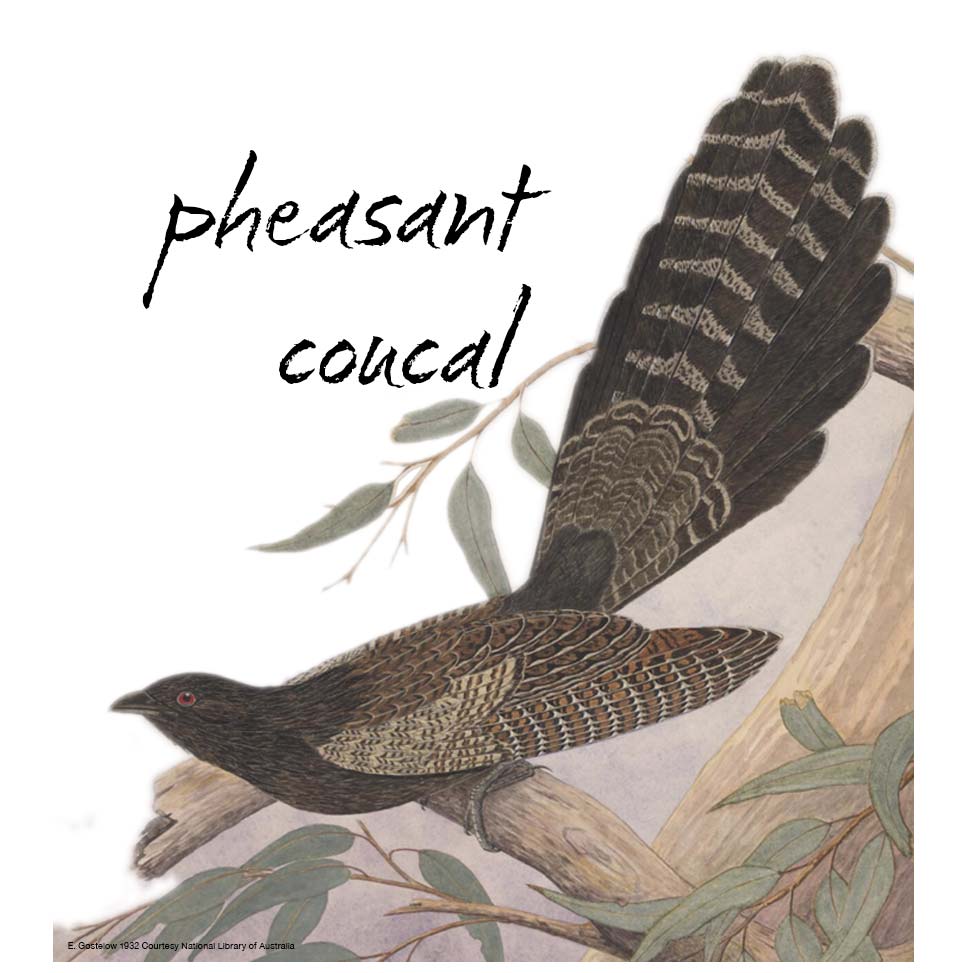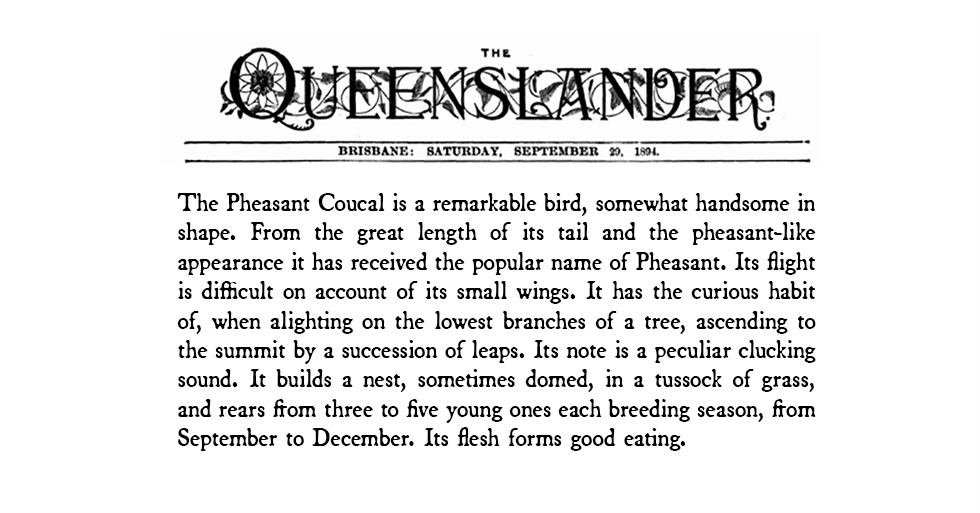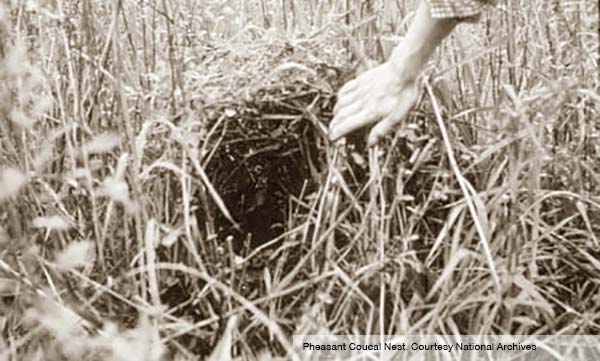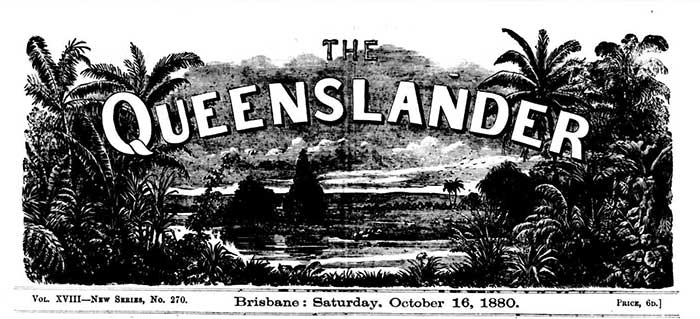


Pheasant coucals are a special reminder of how essential a whole of community approach is to protecting native habitat.
It is not enough to have dense tall grasses near to the creek where the coucals can build their nests. These spaces must also be surrounded by a protective buffer of other vegetation as the birds will abandon their nests if they are disturbed.

This is especially unfortunate for the pheasant coucal as unlike other cuckoo species, they do raise their own young rather than simply laying their eggs in other bird's nests.

Natural predators
Pheasant coucals had several qualities that were likely to get them shot in the late 1800s.
One was the fact that they looked like the pheasants of England and were considered a local game bird well suited to being bagged by sport shooters.
The other was that they are natural predators. As this newspaper article from 1880 shows, farmers did not always take kindly to their raids on the young chickens that strayed from the hen house.
BUSH NATURALIST
Mr. J. Gibson, of Stanmore, writes to us as follows :— "I don’t know the classical name of the bird, but down here it is
called the “swamp pheasant”—rather pretty plumage, with long tail, somewhat resembling the English pheasant. We came upon him one morning as he had just killed two chickens about a week old that had escaped through the slabs of the fowl-house, and we watched him for a little time standing with bis foot on one of the chicks whilst he was eating the other.”
The bird is the pheasant coucal; it is a cuckoo, but not parasitic upon other birds — that is, it builds its own nest.
This statement of Mr. Gibson’s I can fully endorse as probable, for last year I lost quite a dozen chickens in the same way.
The birds always came at early dawn. I had forborne shooting them, for I liked their strange notes and never dreamed of their destructive habits, although the regular loss of a chicken was unexplainable. However, one morning I found no less than three of them slaughtering a clutch of just hatched chickens and fighting the old hen.
I shot them all three,
and then I remembered that this bird was always the only bird Been about when those unexplained rows in the poultry-yard occurred. Doubtless they eat many eggs and young of wild birds.—Bush Naturalist

Objects of natural interest
The loud coo-coo-coo-coo call in a descending scale of the pheasant coucal has ensured that this bird makes its presence known in a local area.
Even by the 1950s however, a naturalist writing about the curious qualities of the coucal in the Brisbane Courier Mail was moved to comment that "there were still quite a few gaps to fill in the pheasant's life history".
PHEASANT COUCAL - NO SOCIAL BUTTERFLY
One Australian member of the Cuculidae, or cuckoo family, is a firm believer in family and the home influence.
Most bush people lightly dismiss this largish swamp-frequenting species as the ‘swamp pheasant’, but it is correctly the pheasant-coucal, representing a genus of the notorious egg-foisting cuckoos.
The loud ‘coo-coo-coo-coo’ in a descending scale is one of the typical bird voices of coastal Queensland, where the ‘swamp-pheasant’ hunts for grasshoppers, frogs, small lizards, and snakes. When disturbed, it blunders across a road or up a tree to drop like a stone to cover.
Recently Messrs Alec and Jim McKenzie observed coucals flying to a clump of lantana and blady grass on Pimpama Creek. There they watched parent birds stuffing four tiny chicks with grasshoppers.
BIRDS HAD FLOWN !
We called to see this interesting find, only to discover that at proximately 10 days of age the very immature but strong footed youngsters had already left home.
Faint calls of ‘chick’ ‘chick’! eventually betrayed two of the elusive babies which we collected only in a knick of time, for a flickering tongued goanna, hotly attacked and roundly cursed by a parent bird, was even then prosepecting the area.
He joined the collection too!
By extraordinary luck, a true pair, the young coucals are thriving here at West Burleigh. They follow at heel for food and fly upon ones shoulders.
BIG APPETITES
Egg custard, minced meat, tadpoles, beetles, grasshoppers and lizards are devoured ravenously and the birds bid fair to be thoroughly interesting objects of study, for there are quite a few gaps to fill in the pheasant coucal’s life history.








